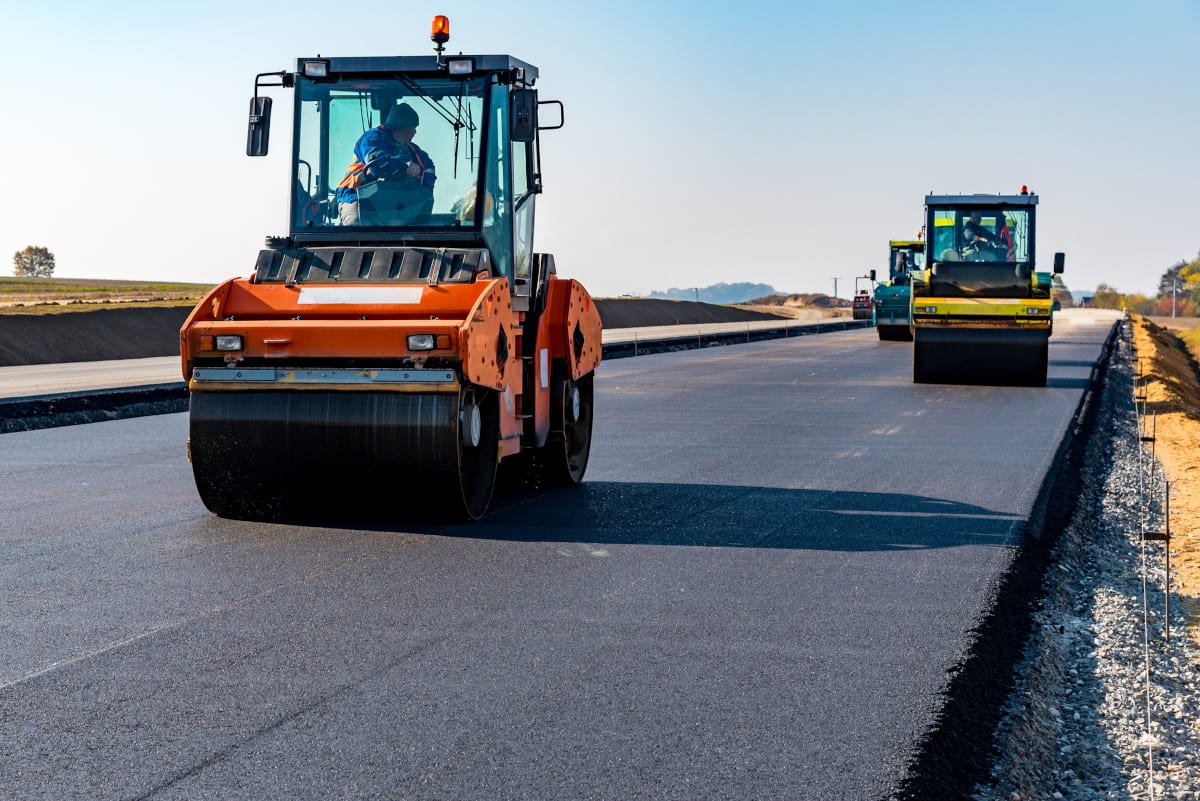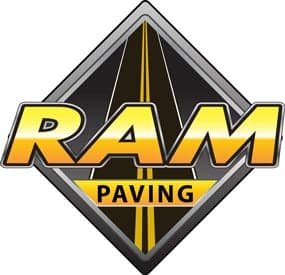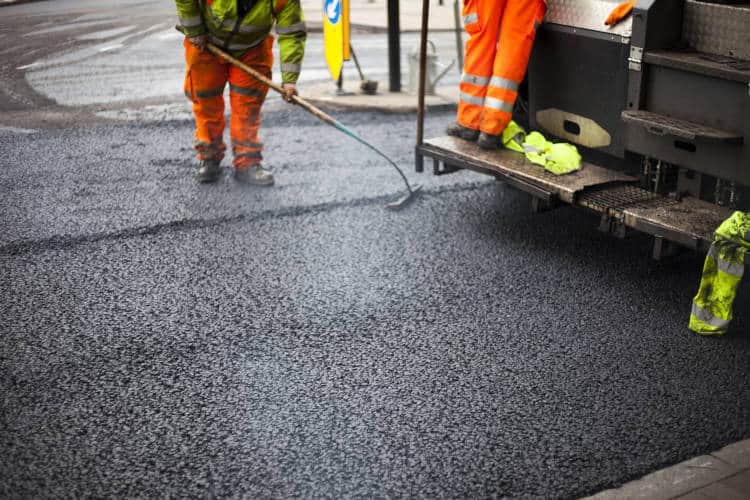Asphalt paving has been around for hundreds of years, but it’s still one of the most popular ways to build modern roads and driveways. What makes asphalt’s reputation so durable? We’ll give you a hint: part of the answer is in that last sentence.
Learning a little about asphalt can show you how to make the most of it for your next paving project. The information below will teach you what’s behind the costs of high-quality asphalt paving and help you choose a reliable contractor next time you’re having the driveway fixed up or replaced.
What’s In Modern Asphalt?
Modern-day asphalt consists of three essential components (although the composition of each can vary significantly):
- Mineral filler, which fills gaps in the final mixture and improves the binder’s cohesion. Limestone powder is one of the most common mineral fillers in modern asphalt.
- Aggregate materials, which support most of the weight placed on the finished surface.
- A binder (such as bitumen), which holds the aggregate and mineral filler together.
Asphalt is typically placed in layers on top of a foundation to create a finished surface. However, it took many years for this paving method to become the norm.

A Brief History of Asphalt
We tend to think of paved roads as an innovation that accompanied early automobiles, but asphalt has actually been around for much longer. Some of the earliest-known paved highways date back to the 1500s and were built by the Incas of Peru. They didn’t use modern asphalt cement, but they did use a substance that resembles bituminous macadam (a less-sophisticated form of asphalt paving).
In Europe, discoveries of large asphalt deposits during the 1700s and 1800s made it possible to construct paved walking areas and roads. The first asphalt roadways in North America appeared in the 1870s, in the Northeastern United States.
Asphalt became one of the world’s most common paving materials during the 20th century, as automobiles became a standard transportation method. Today, approximately 65% of the world’s roads are paved, many with asphalt.
How is Modern Asphalt Different?
The asphalt we use today is obviously much different than the varieties used centuries ago. Its evolution has involved countless incremental steps, but here are a few of the major developments:
- The aggregate materials mixed with bitumen to create the first examples of asphalt roads were often hand-broken pieces of stone. Modern asphalt surfaces use a broader range of aggregate materials, which are much more refined due to advances in industrial technology.
- Using finer aggregates such as crushed rock, sand, and gravel has made modern asphalt surfaces much smoother and thinner than their early counterparts.
- Today, asphalt sometimes contains other materials such as rubber, which can improve its performance.
These advances (among others) have resulted in many different asphalt types. As such, today’s homeowners have numerous options for paving their driveways with asphalt. But how does asphalt compare to other common paving materials such as concrete? Let’s find out.
Why Asphalt Rules the Roads (& Driveways!)
There’s a reason why you don’t see many public roads made out of concrete in cities like Edmonton or Winnipeg. Put simply: concrete doesn’t have asphalt’s ability to withstand the elements.
That’s not to say concrete isn’t durable. The problem is that concrete cracks more quickly in cold temperatures. Concrete’s vulnerability to the cold makes it an impractical choice for roads and driveways in the prairies, with their long (and often harsh) winters.
Some homeowners prefer the look of concrete for driveways, but these projects have higher installation and maintenance costs than their asphalt equivalents. However, asphalt paving still comes with certain costs — especially for higher-quality jobs.
The Costs of Asphalt Paving
Basic prices for asphalt can vary depending on several factors, such as:
- The type of asphalt used for your project. Generally, asphalt for driveways should have a finer aggregate structure than asphalt used for roads. Finer aggregates make the surface smoother and more durable, but they may also be more expensive.
- The consistency of the asphalt, which is vital to consider when using recycled asphalt pavement (or RAP). RAP may be cheaper than new asphalt, but inconsistent mixtures can suffer from performance issues.
- The thickness of the surface in question.
In most cases, asphalt paving costs about $3-$4 per square foot. However, these costs can increase if substantial excavation work is required to create a proper foundation, which typically involves making a gradient and installing a base layer.
Fortunately, it’s possible to perform minor asphalt repairs with DIY repair kits available from most home-improvement stores. For larger jobs requiring a new topcoat, costs per square foot are generally slightly more than half of the installation rate.
Remember: consulting with a licensed contractor is the only surefire way to get an accurate quote for asphalt paving services. They’ll be able to speak to you in detail about the materials and equipment they use and tell you more about the likely costs associated with your site.
Asphalt: a Worthwhile Investment for Canadian Roads & Driveways
Asphalt has been around for many years, and it doesn’t seem to be going anywhere soon. Although other paving materials exist, asphalt remains one of the most practical and economical options.
The cold temperatures in cities like Edmonton and Winnipeg make concrete undesirable for paving roads and driveways. Fortunately, high-quality asphalt represents a time-honored solution for city planners and homeowners who want functional, cost-effective surfaces. Use what you’ve learned above to choose the right materials for your needs, and make sure your next paving project goes smoothly. And one last detail, it might seem tempting to lay your own asphalt, but always hire a professional asphalt contractor.

